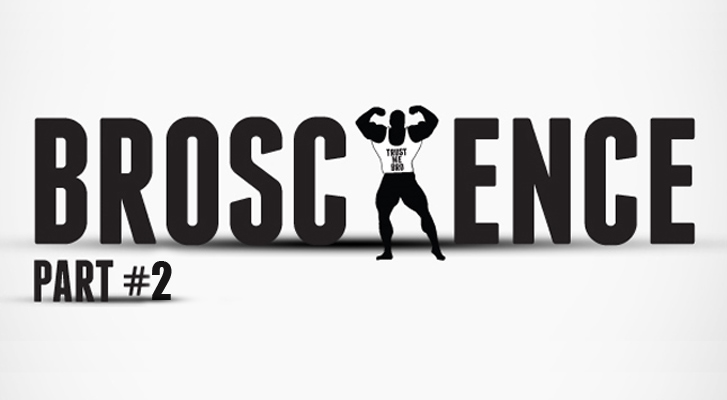It’s back. Broscience. Guaranteed to get you talking – whether in agreement or otherwise, broscience is a minefield of controversy. So we’ve decided to weigh in, be your ‘big bro’ if you like, and put some pro science behind those broscience myths highlighted in Part #1 of our broscience series.
This week we’re tackling creatine and protein – two of the more popular supplements that are guaranteed a place in the top 3 of most ‘essential supplement’ lists. When it comes to busting the myths behind creatine everyone’s body is different. Sports nutrition is not ‘one size fits all’ and it’s important to listen to your body; what you require may not be the same as someone else. Nonetheless, below are our best shots at cracking some of the more common creatine and protein broscience myths. We’ve used layman terms to debunk the myths – we don’t do broscience here at BULK POWDERS™.
Your body can suffer from a protein overload
BROSCIENCE: The body can only absorb 20-23g of protein per serving. Take more and it’s a waste.
ACTUAL SCIENCE: Like most foods, look on the back of any protein supplement packaging and you’ll see the ‘recommended daily allowance’. Everyone’s body is different and a big factor for how much protein you need depends on how hard you’re working out. Ideally you should consume 1g of protein per pound of body weight, and you should make sure that protein shakes are used to supplement your protein allowance but not as the main source. So next time someone at the gym scoffs at your shaker and tells you to put in more powder, you can knowingly agree if you’re a big guy who is training hard every day, and disagree if this isn’t the case. Dependent on your body type and training regime you may need more protein to repair your muscles and this may well mean more than 20-23g – but this isn’t true for everyone.
Skinny + Creatine = Ripped
BROSCIENCE: Taking creatine will help you get ripped
ACTUAL SCIENCE: Creatine is stored in the muscle, with the average 70kg male storing circa 120 grams. However, muscles have the capacity to store 160g. The aim of creatine supplementation is to fill up the creatine ‘fuel tank’ which provides the body with more high intensity energy. This increase in energy can lead to greater training adaptations as the body is able to perform more work, and create a greater stimulus for growth (i.e – helps you get ripped).
In fact, The Journal of the International Society of Sports Nutrition (Buford et al, 2007) said, in its position paper on creatine, that “creatine monohydrate is the most effective ergogenic nutritional supplement currently available to athletes in terms of increasing lean body mass during training.”
Too much protein can cause health problems
BROSCIENCE: Too much protein will damage your kidneys
ACTUAL SCIENCE: It is recommended that people who have kidney or liver problems should watch their protein intake as protein encourages your organs to work, which can cause strain to the liver and kidney. However, if you follow a balanced diet and drink plenty of water, the limited side effects of protein are easily avoidable.
Creatine can cause problems… in general
BROSCIENCE: Creatine is dangerous
ACTUAL SCIENCE: On this one we can really put our foot down…. It’s a no. This all stemmed from a story in a French newspaper called L’Equipe which quickly snowballed and turned into Chinese whispers on the lips of supplement haters everywhere.
The paper suggested that creatine was dangerous for the kidneys – although there are no documented cases demonstrating any side effects of taking creatine (apart from weight gain).
The concern around kidney function originates from an increase in creatinine levels that can be seen when supplementing with creatine. However research suggests that most athletes already have increased creatinine levels due to training intensity – with no link to renal function. And importantly, if creatine supplementation is stopped, creatinine levels should return to normal.
So there we have it. A guiding light to show you the way from the protein wilderness. Join in the debate and tell us what you think via our Facebook and Twitter pages.
Part #3 will debunk more broscience myths soon!
















